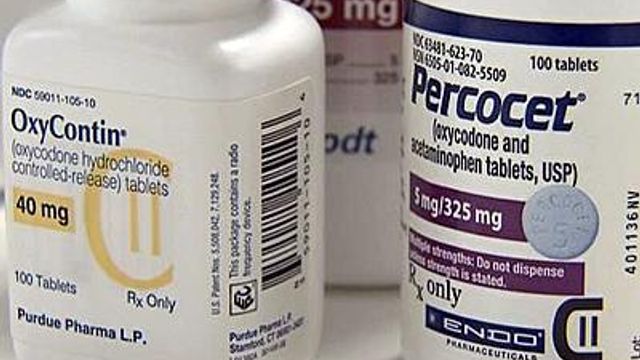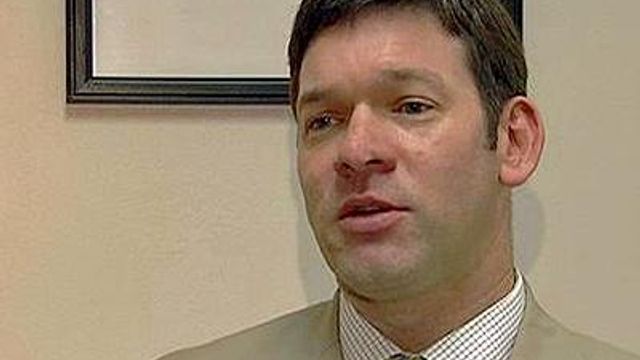Local News
The new face of drug addiction
According to the National Institute on Drug Abuse, prescription-drug abuse is the fastest growing area of addiction in the United States, affecting all socioeconomic groups.
Posted — UpdatedRALEIGH, N.C. — After years of struggling with an expensive prescription-drug addiction, Stephanie Thompson decided it was time to seek help.
One night in August 2006, after having taken two months' worth of Percocet and other pain relievers within a two-week period, the mother of three walked into a local emergency room and poured out her purse filled with empty pill bottles before an ER doctor.
"I took all this," she recalled telling him. "I don't have any more. Help me."
Thompson, 29, is what some substance abuse specialists refer to as the new face of drug addiction.
According to the National Institute on Drug Abuse, prescription-drug abuse is the fastest growing area of addiction in the United States, affecting all socioeconomic groups.
Thompson never thought she could become addicted – she started off with a small dose of Percocet following a Cesarean section with her second child.
"I thought it was like anything I'd ever done in my life," she said. "I could set anything down and walk away from it, and I thought that was the same as this. Then, I realized I couldn't walk away from it."
An infection after her third child was born solidified her addiction, and she eventually ended up on OxyContin and a $4,000-per-month habit.
"They made me feel like I was a better person, because I would feel like I had all the energy to chase kids all day, every day," she says.
The more she took, though, the more physically dependent she became, she said. "Then, you have to take a certain amount to even function at a low level of life."
The addiction eventually cost her custody of her children.
The National Institute on Drug Abuse reports that about 48 million people, or 20 percent of the U.S. population, have taken prescription drugs for non-medical reasons.
The trend is no different in the Tar Heel state, said Tad Clodfelter, director of Southlight, the largest provider of substance abuse services in Wake County. The nonprofit organization treats anywhere from 7,000 to 8,000 clients a year.
Prescription-drug addiction in North Carolina grew from about 15 percent of substance abuse addictions in 1993 to 35 percent in 2005, he said.
"The face of opiod prescription abuse is the face of me and you," Clodfelter said. "It's all of us. So, if you're looking for a certain type of profile, you won’t find it. It affects everybody."
Part of the reason, he said, is that they are easily accessible on Web sites that sell drugs without prescriptions.
"They are easy to come by in many respects, they often fly under the radar screen," Clodfelter said. "Even kids can go on these Web sites and order stuff, have it FedEx'ed to their home or whatever their location and get a package the next day."
Doctors are also often unaware that their patients are getting medication from multiple sources, Clodfelter said.
Thompson, for example, said she began going to every doctor she could think of – "I got all that I could and took all that I could."
"We do need to increase awareness to those doctors who are prescribing and to be in greater consultation with all their clients who are taking prescription opiods to monitor that extremely closely," Clodfelter said.
Thompson said she also realized she could buy prescription drugs from other patients, including the elderly living on fixed incomes.
"They sell their pain medication for a lot of money, and then live off that money all month," Thompson said. "They depend on getting a prescription for little or nothing at the pharmacy and selling it for hundreds of dollars."
Thompson is now fighting her addiction. Shortly after her ER visit nearly three years ago, she started going to Southlight and is now in recovery.
She continues to seek counseling once a week, and she has regained custody of her children.
"Things have turned around. I feel really good today," she said. "At times it really does seem like it's hopeless. Many times I thought my life is over, and now I don't feel that way anymore."
But the journey has not been an easy one, she said, and she wants others to know just how easy it is to slip into this type of addiction.
"Somehow, you justify it every time you take one," she said. "'I have a prescription. There is nothing wrong. I have a prescription for these, why shouldn't I be able to take them?'"
Clodfelter said everyone who takes prescription drugs needs to be their own advocate by monitoring themselves for signs of addiction and regularly communicating with their doctors.
"This addiction can happen to anyone," he said. "It's nondiscriminatory in its effect."
Thompson agrees.
"I think this is a huge problem. I think we have not seen the end of it," she said. "I really do want people to know that prescription pills (can be) really, really bad."
• Credits
Copyright 2024 by Capitol Broadcasting Company. All rights reserved. This material may not be published, broadcast, rewritten or redistributed.






